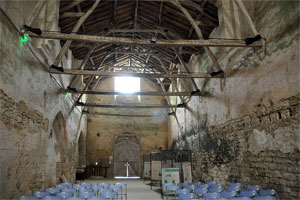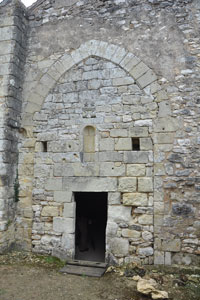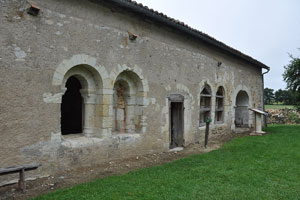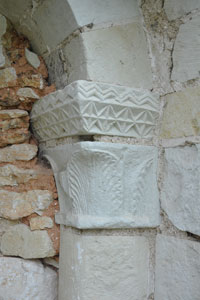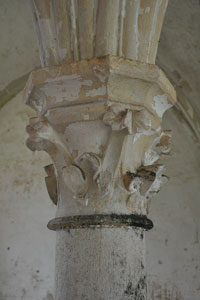The origins of this Cistercian monastery are linked to the figure of Abbot Isembaud (†1140), who founded several hermit-inspired communities in this region. He was probably trained as a monk at Fontgombault (Indre) and later became abbot of Saint-Pierre de Preuilly (Indre-et-Loire). Around 1120 he left Fontgombault again and began founding new religious communities.
One of the establishments he founded was at Font-à-Chaux, which soon abandoned its eremitic character to become a Benedictine monastery. In 1124, the foundation charter of this new house was granted, along with a donation of land. It took the name l’Étoile in memory of Pierre de l’Étoile (†1114), Isembaud’s brother. The founder and first abbot died in 1140 and was buried in the abbey church. His successor, Bernard, incorporated the monastery into the Cistercian order in 1145, affiliating it with Pontigny (Yonne), which sent monks to instruct the community in Cistercian customs.
This incorporation marked the beginning of a long period of prosperity, which would be interrupted by the turmoil caused by the Hundred Years’ War. Around 1356, the abbey was directly affected by the conflict, suffering major destruction. After its restoration, from 1520 it adopted the commendatory system, which again led to decline—a situation further worsened by the Wars of Religion. The monastery suffered renewed episodes of destruction in 1562, 1569, and 1589.
The period under Abbot Béroudière (1616–1621) was especially disastrous: the abbey lost most of its property and only one monk remained. However, in 1621, l’Étoile was reformed and entered a new phase that allowed it to survive, albeit precariously, until the Revolution. At that time, communal life came to an end and the monastery passed into private hands. Despite the subsequent lack of maintenance, the monastic complex still preserves a large portion of its structures, notably much of the (heavily altered) church and the restored chapter house.
Affiliation of l'Étoile
According to Originum Cisterciensium (L. Janauschek, 1877)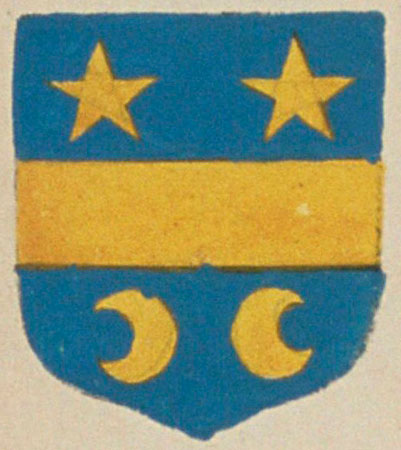
Armorial général de France (18th century)
Bibliothèque nationale de France
- AUBERT, R. (1963). Dictionnaire d'histoire et de géographie ecclésiastiques. Vol. 15 i 26. París: Letouzey et Ané
- BASCHER, Jacques de (1983). Les fondations d'Isembaud, abbé de Preuilly et de l'Etoile. Revue Mabillon. Núm. 293-294. Ligugé: Abbaye Saint-Martin
- BEAUNIER, Dom (1910). Abbayes et prieurés de l'ancienne France. Vol. 3: Auch, Bordeaux. Abbaye de Ligugé
- GARDA, Claude (1970). L’ermitage de Saint-Pierre-en-Vaux. Le pays chauvinois, núm. 9
- GARDA, Claude (1992). L’abbaye de l’Étoile. Rennes: Ed. Ouest-France
- JANAUSCHEK, Leopoldus (1877). Originum Cisterciensium. Vol. 1. Viena
- LALANNE, Charles (1859). Histoire de Châtelleraud et du Châtelleraudais, vol. 1. Châtellerault: Rivière
- SAINT-MAUR, Congregació de (1720). Gallia Christiana in provincias ecclesiasticas distributa. Vol. 2. París: Typographia Regia




